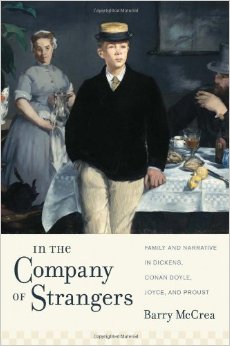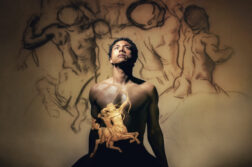 Beatitude
Beatitude
by Larry Closs
Red Satori Press. 263 pages, $16.95
In the mid-1990’s, two young men—Harry Charity, who is gay and single, and Jay Bishop, who is neither—are up-and-coming colleagues at a glossy New York magazine. They bond quickly over their shared fascination with the Beat Generation, but then Charity falls in love with Bishop, who’s devoted to his artist-girlfriend Zahra. While author Larry Closs doesn’t model their friendship on that of Jack Kerouac and Neal Cassady, there are allusions to that relationship, and to the meaning of friendship, throughout this well-written and appealing debut novel. Narrator Charity spends much of Beatitude in avid pursuit of early editions of Kerouac’s works and reminisces about an unhappy past relationship with a man named Matteo. Surprisingly, there’s no mention of AIDS in this novel, and while Charity and Matteo were constantly in and out of gay bars, it was Matteo who went home with a new conquest every night. Just when it seems that Matteo’s character is going to be allowed to hijack the story, Closs switches gears and we find ourselves in Greenwich Village, listening to singer Deanna Kirk, at the Nuyorican Poets Café, and at the Museum of Modern Art. Many poets, including Eileen Myles, Bob Rosenthal, and Sparrow, make appearances, but it is Allen Ginsberg who figures most prominently in the novel. A fictional interview that Charity conducted with him at his East 12th Street home feels very realistic and imbues the sometimes irascible Ginsberg with avuncular wisdom. Beatitude also contains two never-before-published Ginsberg poems, “Like Other Guys” and “Carl Solomon Dream,” which Ginsberg read at MOMA on November 14, 1995. Closs, who has done a great deal of research on the subject, seamlessly weaves Beat history and literature into his novel—just enough for the cognoscenti, but not so much as to overwhelm newcomers to the Beat Generation.
Martha E. Stone
 History of a Pleasure Seeker
History of a Pleasure Seeker
by Richard Mason
Knopf. 279 pages, $25.95
This charming novel recounts the adventures of a dashing young man in his search for pleasure and success. In 1907, in Amsterdam, Piet Barol applies for the position of tutor to the young but curiously afflicted son of one of the city’s wealthiest families. Skilled in the art of charm, and possessed of a natural talent for seduction, he soon becomes an indispensible part of the household, both for the remarkable change he produces in his pupil and for his regular trysts with the matriarch. While primarily concerned with Piet’s journey, the novel reveals the complexities of many of the other characters, from the nearly adult daughters seeking to make their own life apart from their family, to the son, Egbert, struggling against a crippling obsessive-compulsive disorder that, until Piet’s intervention, prevents him from stepping outside the family home. Didier, a fellow servant in the house and Piet’s confidant, must also confront his own secrets. His intense feelings for Piet finds him sneaking furtive glances at his friend’s body in the bath and carousing with him in the bars, hoping for the right moment. These actions lead to a sad conclusion toward the novel’s end, when he leaves Piet to his own devices. The many love scenes are highly effective, although only one gay scene is described. In addition, only one gay man in the novel can be said to be happy, and much of that stems from his wealth and power. The others, including Didier, appear nearly pathetic in their desperate, failed attempts to find meaningful relationships. Still, the book charms as much as its main character does, and should have readers eagerly awaiting the sequel.
Charles Green
 In the Company of Strangers: Family and Narrative
In the Company of Strangers: Family and Narrative
in Dickens, Conan Doyle, Joyce, and Proust
by Barry McCrea
Columbia. 265 pages, $27.50 (paper)
Author Barry McCrea offers here some new perspectives on the depiction of family and kinship in these five authors’ works through the lens of queer theory. His main substantive argument is that the traditional family drama was disrupted by the arrival of “the stranger” onto the novel’s center stage. The stranger is Fagin in Dickens’ Oliver Twist, Leopold Bloom in Joyce’s Ulysses, Arthur Conan Doyle’s Sherlock Holmes, or Proust’s Charles Swann in La recherche. McCrea posits that within these narratives are relationships that happen through chance meetings between strangers, disrupting the classic Victorian marriage plot of boy meets girl, boy loses girl, boy and girl reunite and make babies. Here is a world in which the self is defined not by lineage and blood ties but by relations of one’s own making. This tendency McCrea takes to be the hallmark of modernism, a “queer” world in that it disrupts the traditional family and brings strangers and outsiders to the fore. One might question here whether the term “queer” is needed and what it adds to our understanding, say, of Dickens’ Fagin, whose status as an outsider is hardly in doubt, having been debated every which way by critics. Also curious is that McCrea’s gallery of strangers includes no female characters at all, though certainly there are some viable candidates out there (Molly Bloom, anyone?). While modernism may well have “queered” the Victorian literary canon in some sense, this claim in McCrea’s analysis doesn’t take us much beyond the undisputed fact that modernism represented a radical departure from the artistic traditions that preceded it.
Irene Javors






